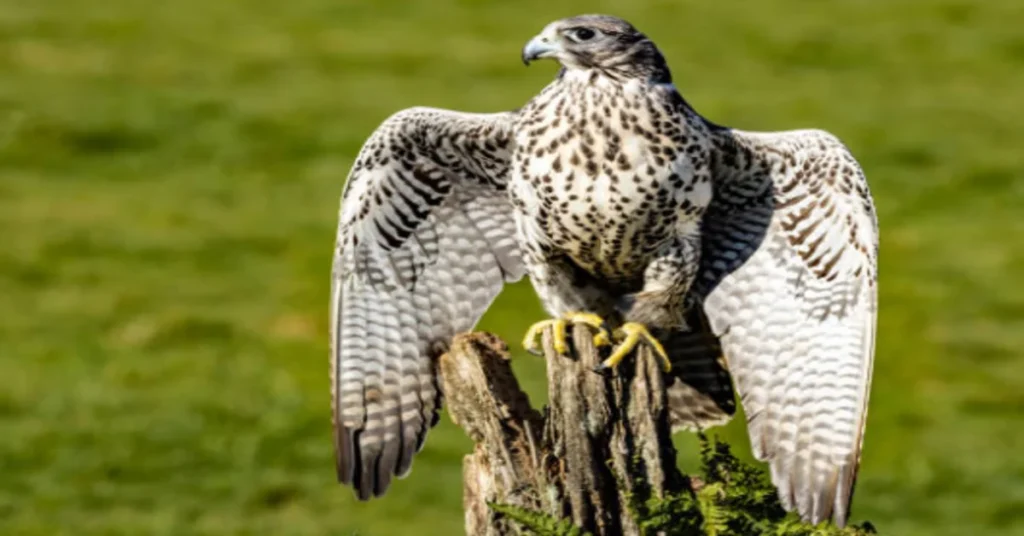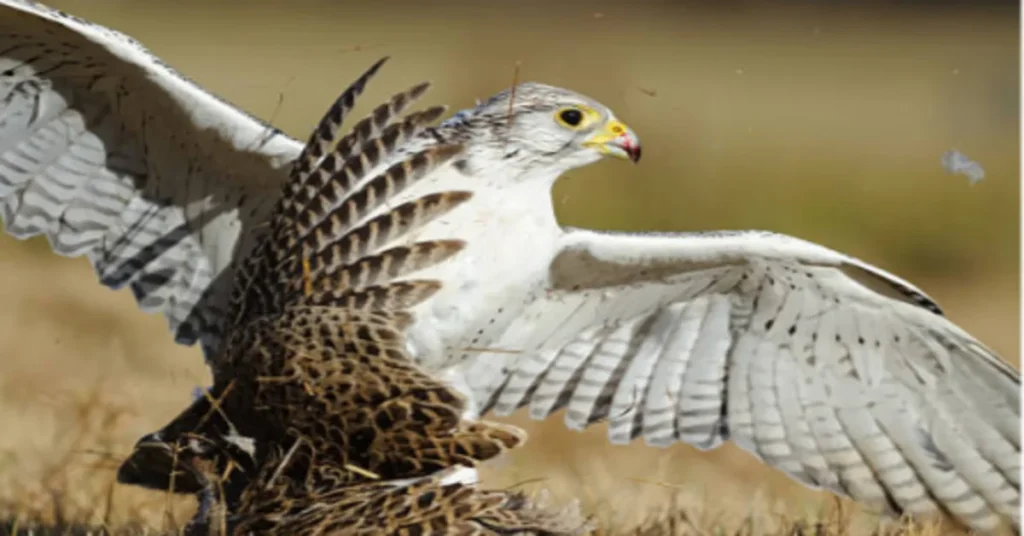GyrFalcon Bird: The gyrfalcon bird (Falco rusticolus) is one of the largest falcon species in the world. It is restricted to the circumpolar region except for isolated populations in the Arctic and Central Asian highlands. During extreme winters when food availability becomes very low, it starts moving to lower latitudes in search of food. These beautiful gyrfalcon birds are found in a variety of colour variations ranging from almost pure white to black spots to dark brown.
Their thick and powerful bodies make them well suited to living in the Arctic climate. The average weight of a female bird is about 1,400-2,100 grams (3.1-4.6 lb) and is almost twice the weight of a male. Gyrfalcons often prefer rocks for nesting. They also sometimes use abandoned raven nests in trees. Usually, female birds are capable of laying about 4-5 eggs in the month of April, but the strange thing is that both the female and the male incubate them alternately.
Pit Viper Snake I Diet, Life Span & Habitat, Scientific Classification
Scientific Classification of GyrFalcon Bird
- Kingdom: Animalia
- Phylum: Chordata
- Class: Aves
- Order: Falconiformes
- Family: Falconidae
- Genus: Falco
- Species: Falco rusticolus
Appearance
The classic image of the gyrfalcon is that of a majestic white bird with black spots, but the bird also comes in white, gray, and dark brown. In North America, the gray bird is more numerous than the other two forms. Adult birds usually have heavy streaking on the back, wings, and tail, and light spots on the underparts.

Body Structure of GyrFalcon
- Size: The size of these birds varies depending on the species, the smallest falcon is the Seychelles Kestrel which is 9.8 inches (25 cm) long and the largest is the Gyrfalcon which can grow up to 25.5 inches (65 cm) long.
- Weight: The average weight of a hawk can range between 1.5 pounds (0.7 kg) and 2.6 pounds (1.2 kg)
- Wing Span:Typically larger falcon species such as the gyrfalcon have a wingspan of 110–160 cm, while the Seychelles kestrel, the smallest of the falcons, has a wingspan of 40–45 cm.
- Eyes: These gyrfalcon birds have eyes with transparent eyelids and lenses much larger than those of humans.
- Colour: The feather colour of these falcon birds can usually be brown, yellow, white, Gray or even black.
Distribution of Gyr Falcon Bird
Falcons are found on almost every continent in the world except the Arctic and Antarctica. Peregrine falcons are found in northern regions such as Alaska and Greenland, and common species such as the Amur falcon migrate south to wintering grounds.
Geography:
| CONTINENTS | Asia, North America, Europe |
| SUBCONTINENTS | East Asia, Central Asia |
| COUNTRIES | Japan, France, Canada, China, Sweden, Norway, Iceland, Finland, United State, Russia |
| REGIONS | Greenland |
| BIOGEOGRAPHICAL REALMS | Nearctic, Plearctic |

Habitat and Life Style of GyrFalcon
Gyrfalcons are generally solitary and only meet their mates during the breeding season. They are diurnal and prefer to hunt by flying low to the ground. They usually catch their prey by chasing it horizontally rather than by diving from high altitude. Most of their kills are made on the ground, regardless of where the prey is caught. Gyrfalcons are generally silent birds but they make loud calls near the nest.
- Group Name- Eyrie, Bazzae
- Life Style: Soaring Birds, Altricial, Terrestrial, Arboreal, Pursiut, Predator, Oviparous
- Seasonal Behaviour: Partial Migrant
Diet and Nutrition of Gyrfalcon Birds
These gyrfalcons are completely carnivorous. Their main prey items are pheasants and waterfowl, which they hunt in flight, and they also like to eat fish and mammals. Bird prey may include gulls, corvids, small passerines, waders and other predatory birds. Mammal prey usually includes lemmings, voles, ground squirrels, rabbits and sometimes bats.
Diet: Carnivore
Life Span of Gyrfalcon Bird
These Gyrfalcon birds can live for an average of 18 to 20 years and if they get good and abundant food, they can also increase their lifespan. But if they are kept in captivity, their lifespan can be reduced to some extent. To live longer, it is necessary for them to be free so that these birds can prolong their life.
References: Wikipedia
https://bytica.net/gyrfalcon-bird-life-span-diet-habitat/
